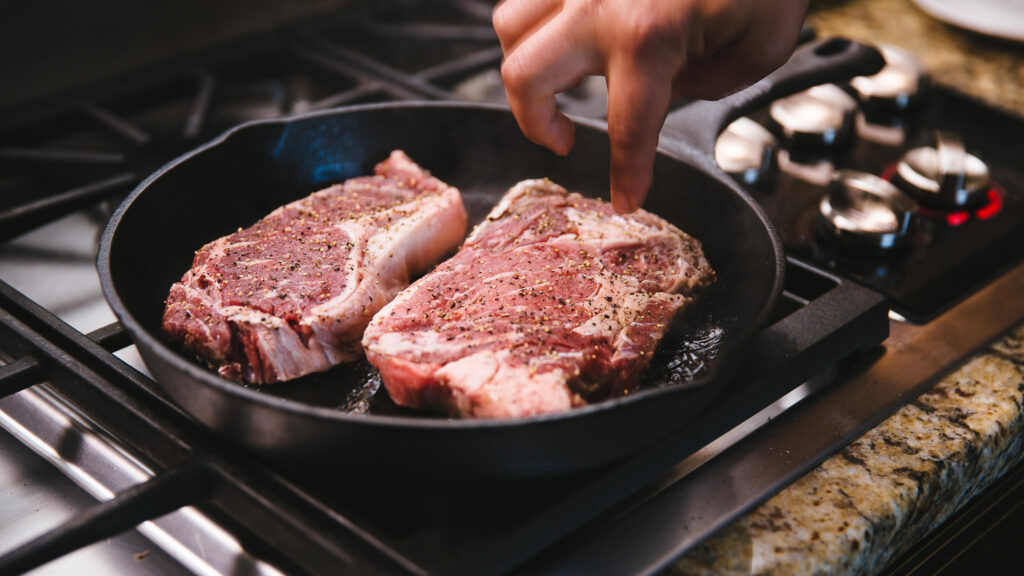1 of 18Tyler Lizenby/CNET
How to Season a Cast-Iron Skillet
Whether you’re seasoning your cast-iron for the first time or refreshing that patina, the process is quick and easy.
Take this pan, for example. Its cooking surface is coated with built-up carbonized oil — residue that can cause delicate foods to stick. The fix? A thorough cleaning followed by a fresh layer of seasoning to restore its nonstick surface.
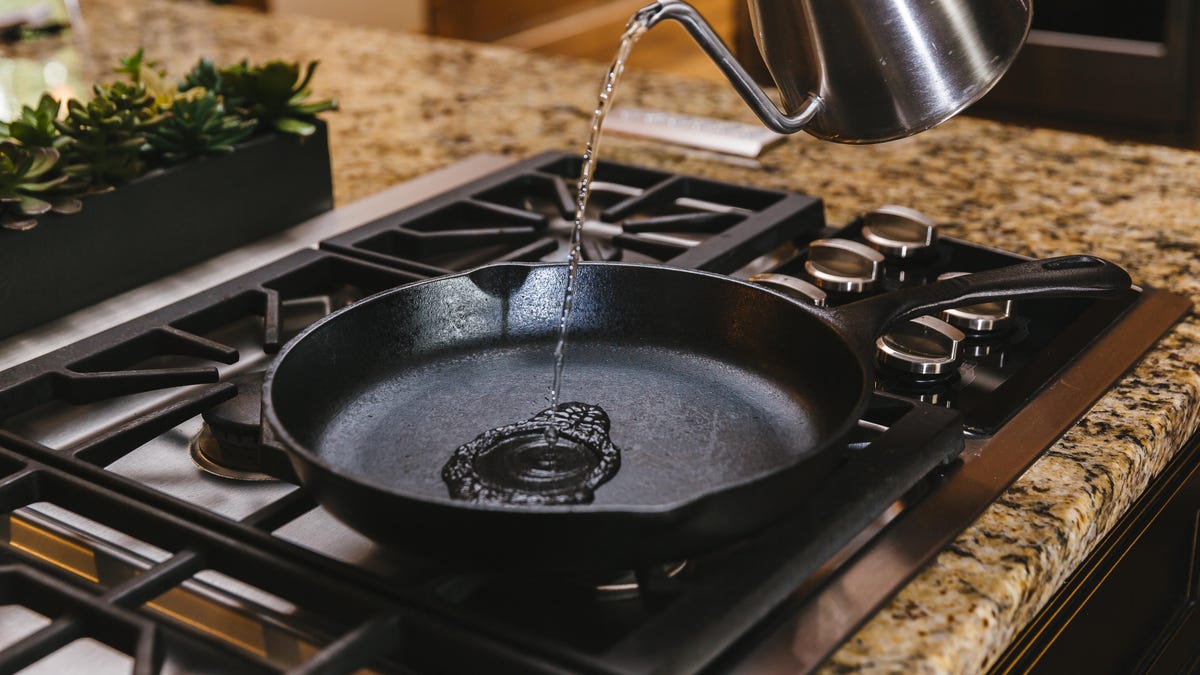
2 of 18Tyler Lizenby/CNET
Add a little water
First add an inch or two of water into the skillet.
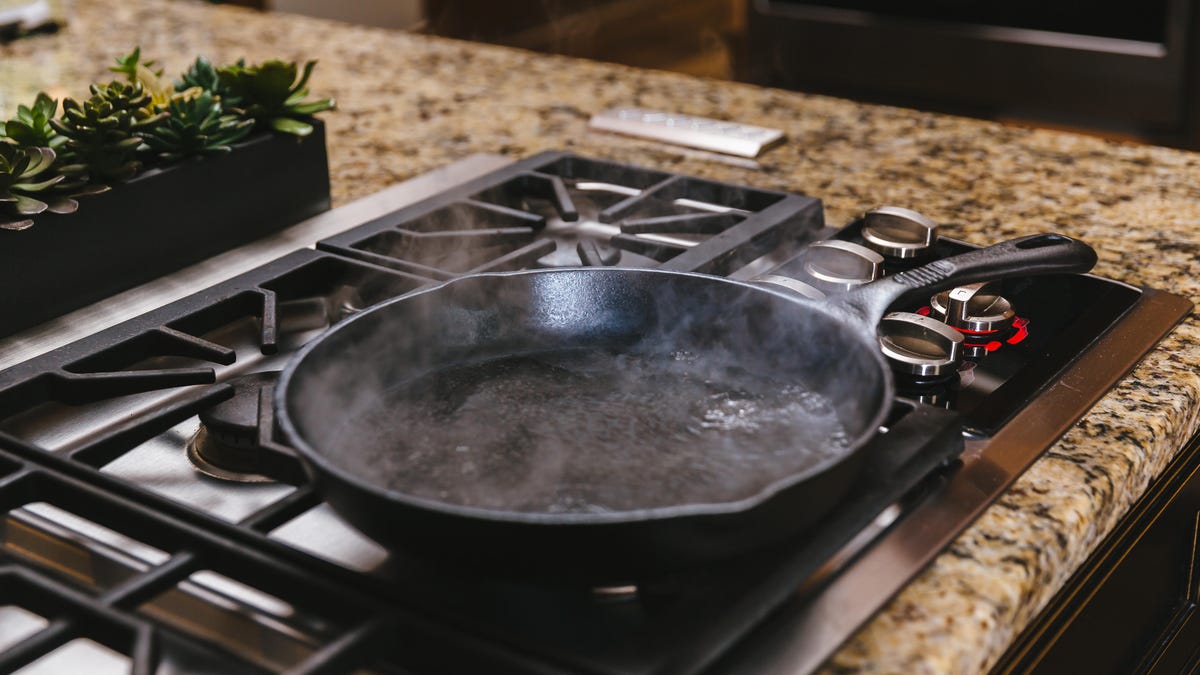
3 of 18Tyler Lizenby/CNET
Simmer for a few minutes
Next turn on the stove and bring the water to a soft boil. Let it simmer for a few minutes to loosen bits of debris and stuck-on junk.

4 of 18Tyler Lizenby/CNET
Pour out the pan
Turn off the stove and pour out the water. Remember, this pan is hot and so is its handle. Always use a pot holder to avoid serious burns. Then, set the skillet aside to cool down a bit.
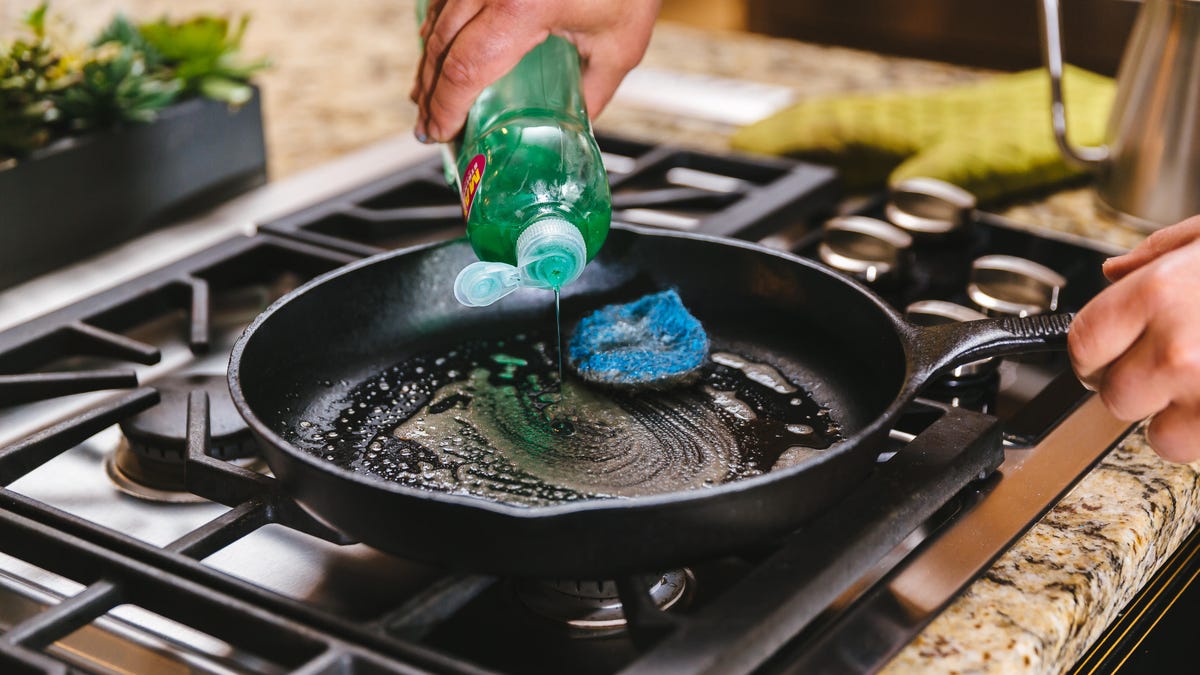
5 of 18Tyler Lizenby/CNET
Don’t fear the dish soap
Once the pan is cool enough to handle, Grab a steel wool pad, and smidgen of mild dish soap. Yes, it’s OK to use soap and abrasive wool when re-seasoning a cast-iron pan.
The idea is to remove the stuck-on bits, then create a smooth layer of seasoning.
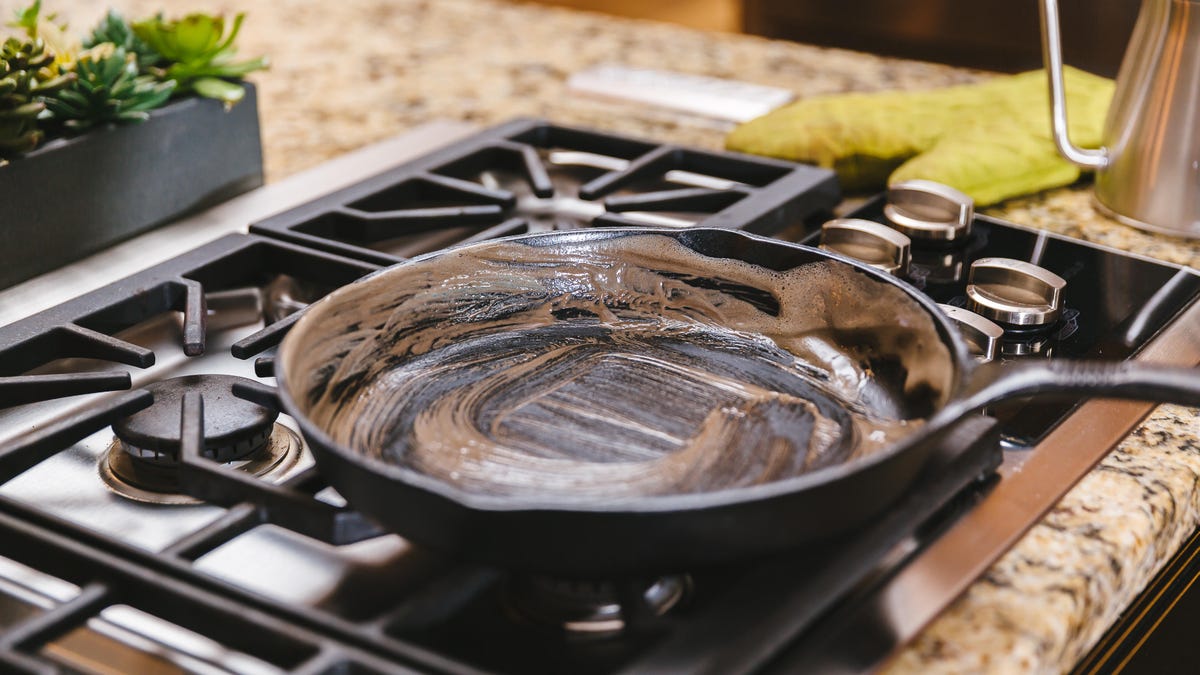
6 of 18Tyler Lizenby/CNET
Scrub with steel wool
Don’t be afraid, scrub that skillet!
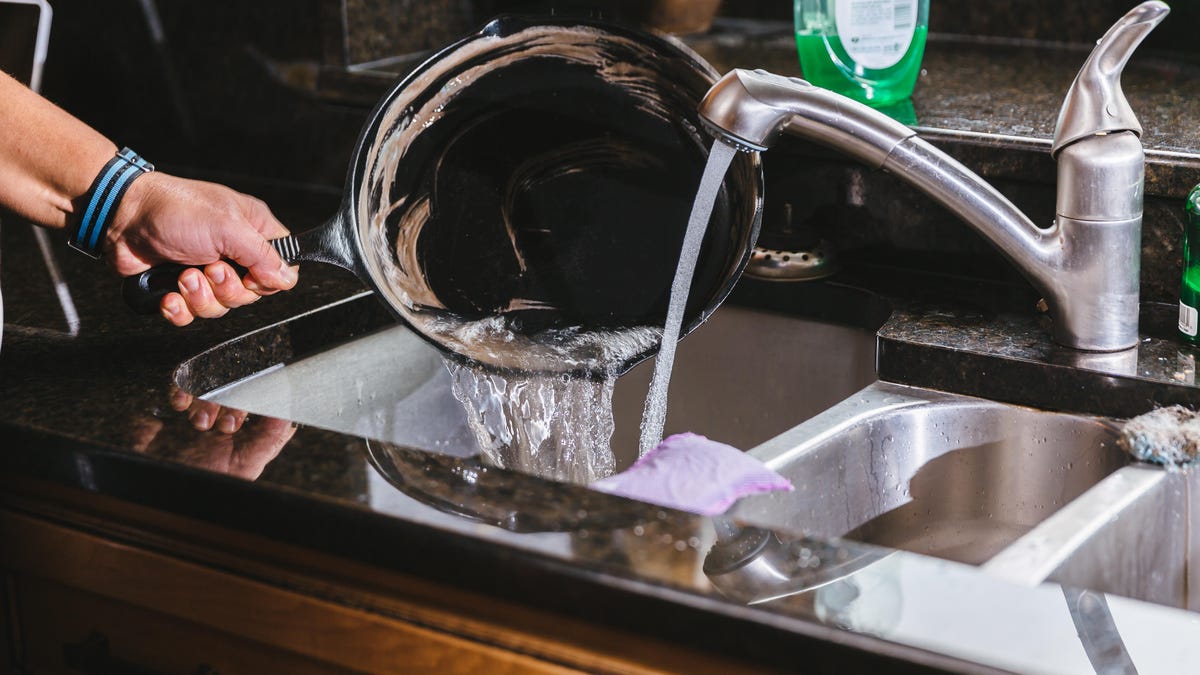
7 of 18Tyler Lizenby/CNET
Wash out the gunk
Take your scrubbed pan to the sink and wash it in warm water.
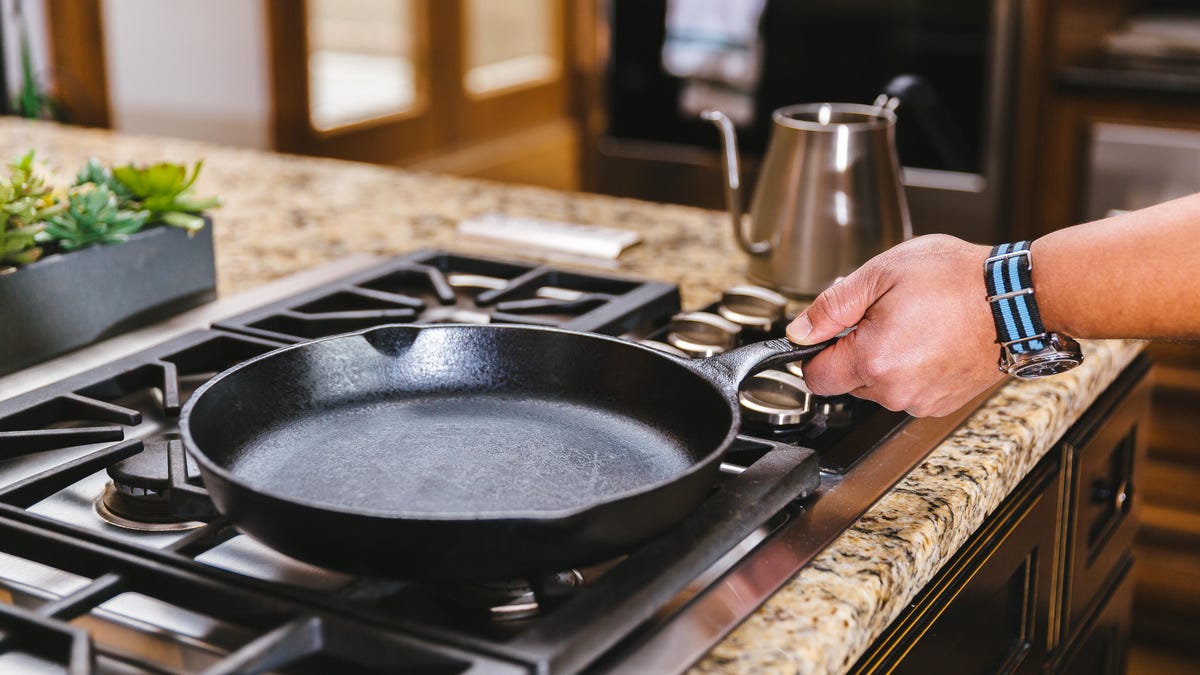
8 of 18Tyler Lizenby/CNET
Dry out the pan
Now dry the skillet with a towel, then place it back on the stove. Fire up the burner to medium and heat the pan for 5 to 10 minutes. The point is to evaporate any lingering moisture.
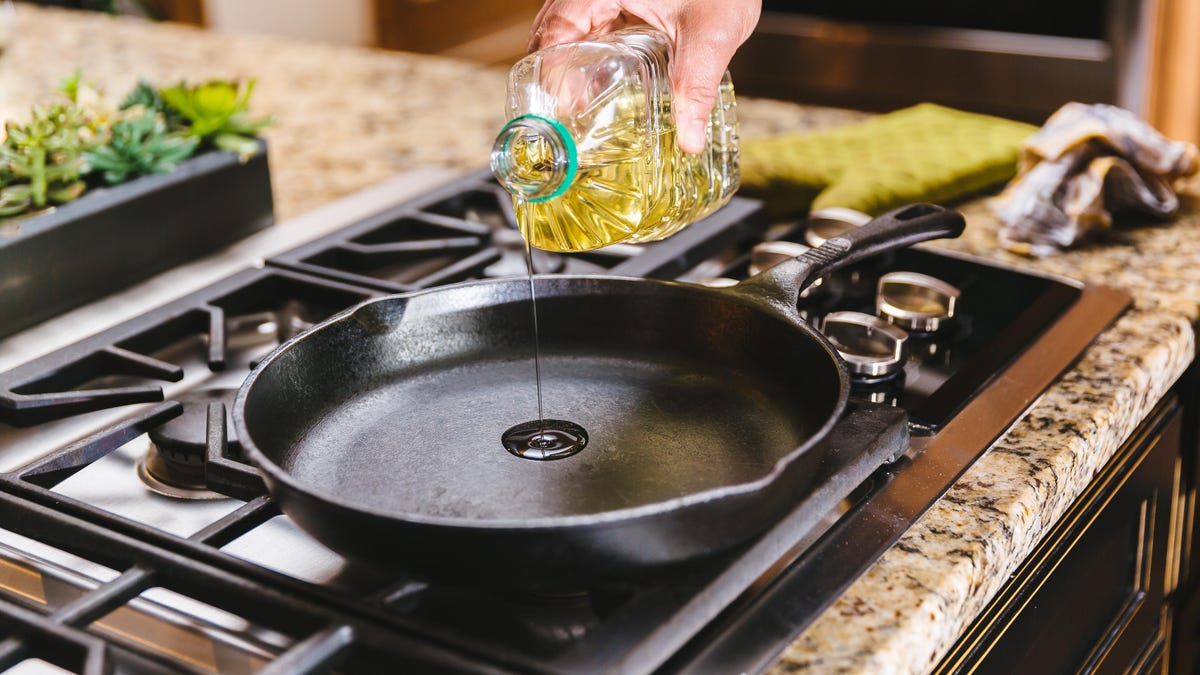
9 of 18Tyler Lizenby/CNET
Use some canola oil
Turn off the stove and let cool until it’s still warm, not cold. Next add about a tablespoon of canola oil. You can also use a solid shortening like Crisco.
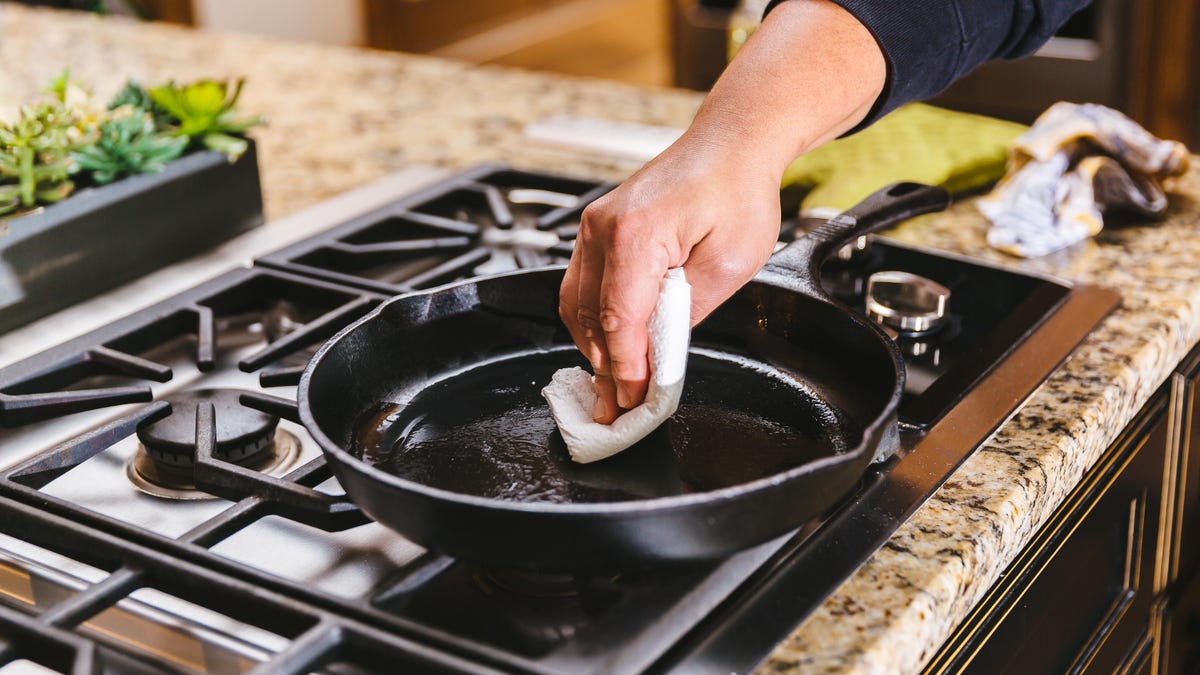
10 of 18Tyler Lizenby/CNET
Rub in the oil
Grease the inside of the pan gently with a paper towel or lint-free cloth.
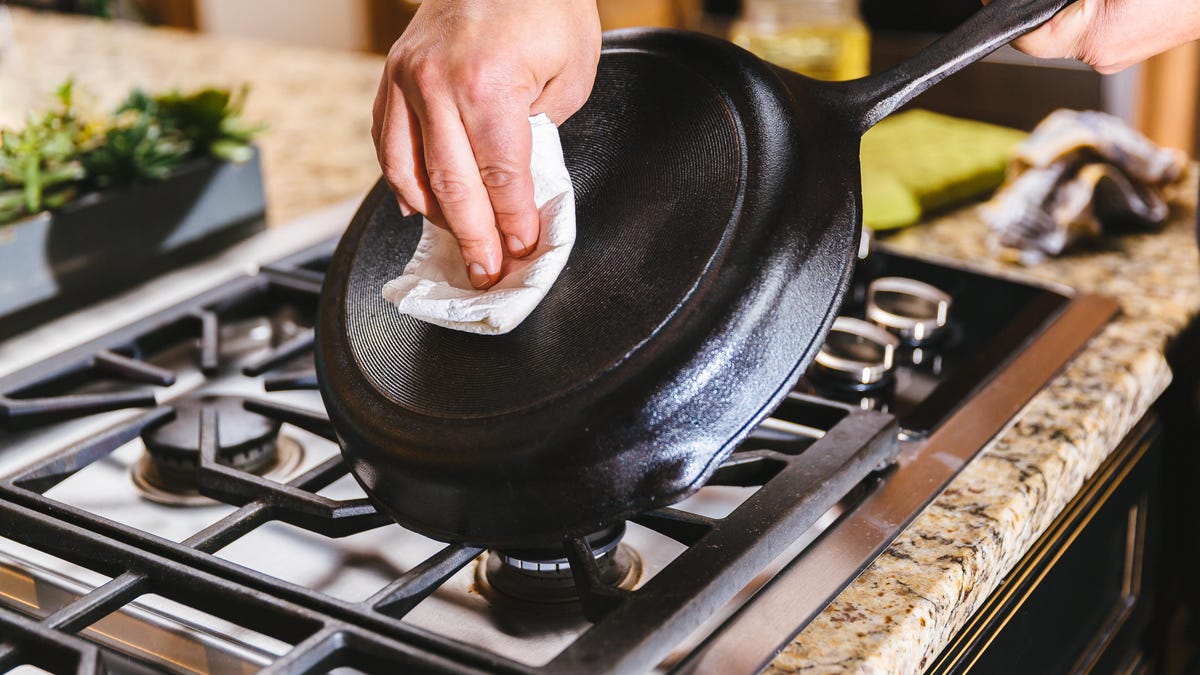
11 of 18Tyler Lizenby/CNET
Oil the entire pan
Don’t forget to oil every part of the skillet, including the sides and bottom — even the handle. Cast iron cookware is made from a solid piece of iron. Every inch should be protected from moisture and rust.
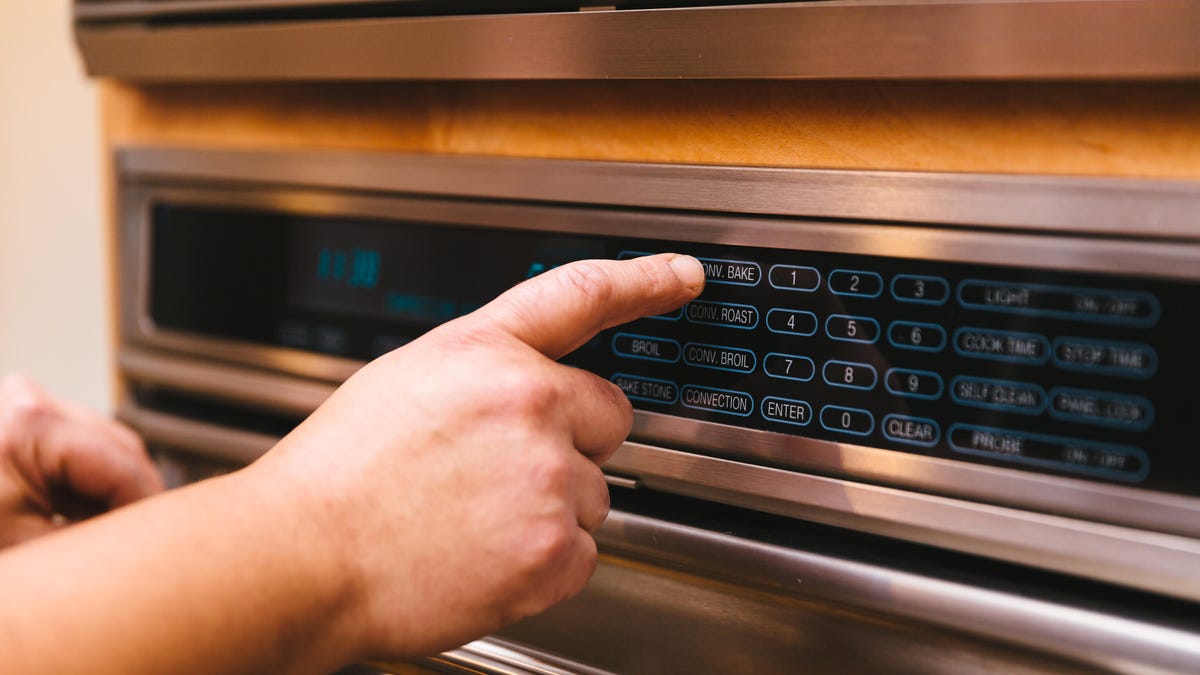
12 of 18Tyler Lizenby/CNET
Preheat your oven
Next, preheat your oven to 350 or 400 degrees F (175 or 200 degrees C).
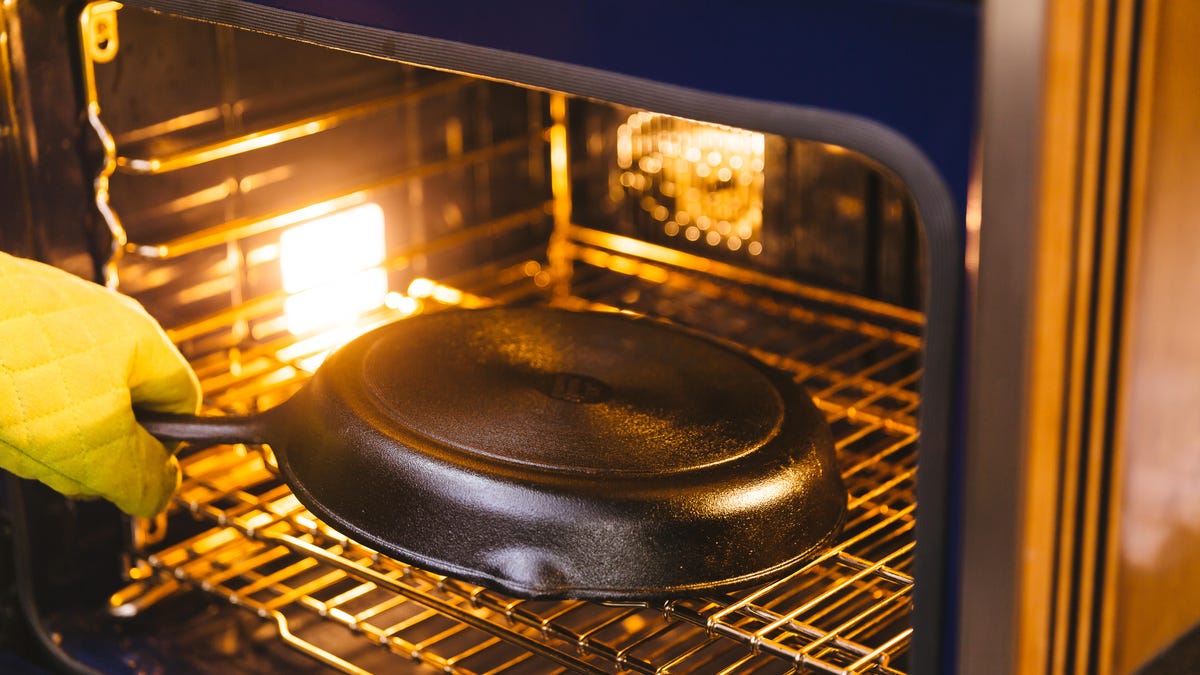
13 of 18Tyler Lizenby/CNET
In goes the skillet
Place your cast-iron pan into the preheated oven. Make sure to drop it in upside down so oil doesn’t pool as it melts. Put an empty baking sheet on the rack directly below the pan to catch any drips.
Run the oven for 45 minutes to 1 hour. Then let the pan cool completely in the oven undisturbed.

14 of 18Tyler Lizenby/CNET
Outdoor grills are a fine alternative
Seasoning tends to create some smoke or at least odd odors. Another way to go is to use an outdoor grill. That way, any unpleasant smells stay outside.
Don’t let the heat levels get too high, though. Above 600 degrees F (315 degrees C) risks burning your oil seasoning right off.
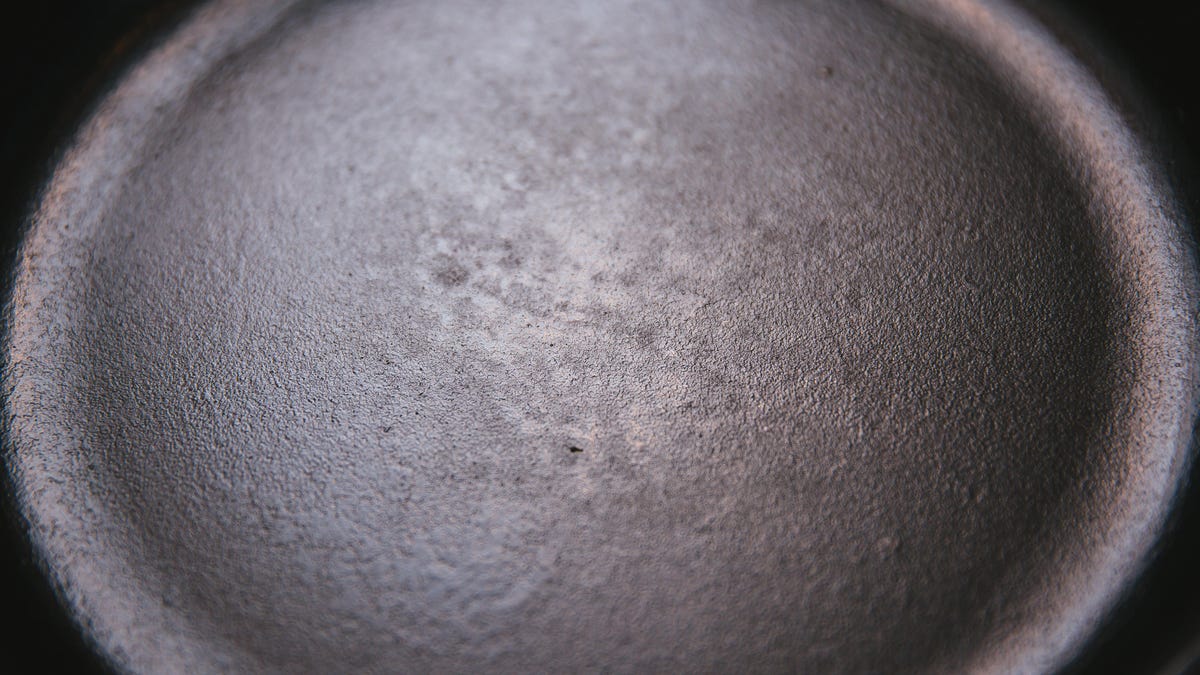
15 of 18Tyler Lizenby/CNET
Smoothly seasoned for duty
This pan is now much smoother inside and ready for action. The more you use it, though, the smoother and slicker the interior will get.
At this point, avoid abrasive pads and cooking highly acidic food. That will pull the season off, forcing you to repeat the process.
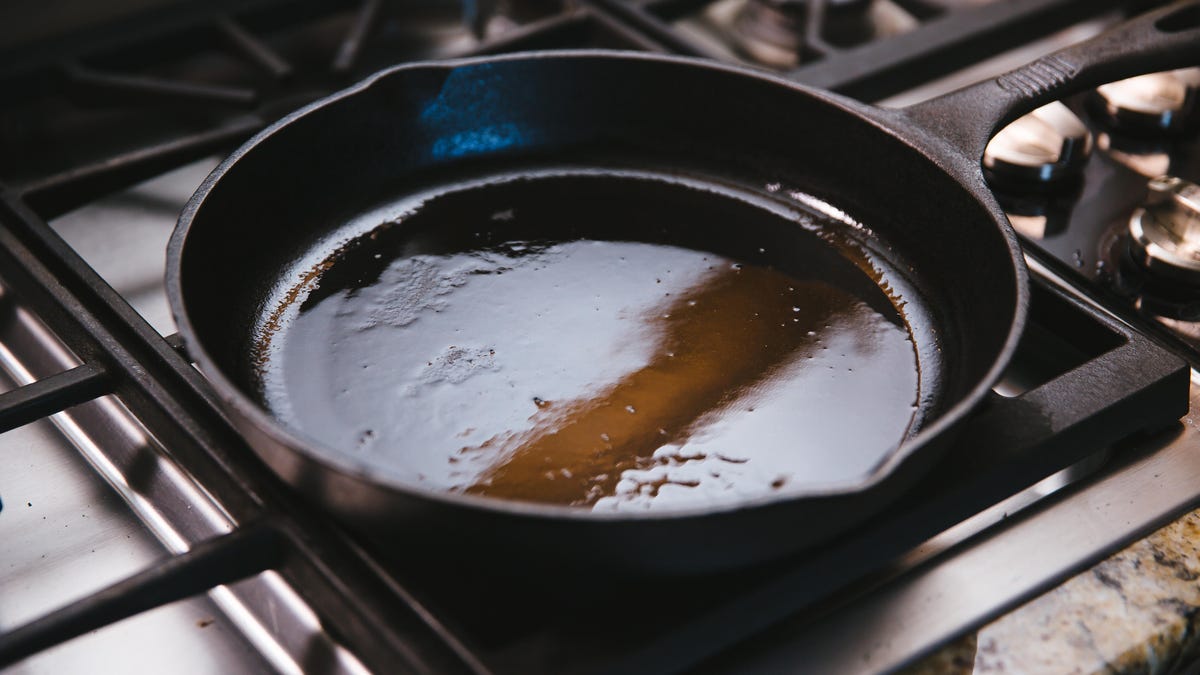
16 of 18Tyler Lizenby/CNET
A trial run under fire
To test my revamped pan, I got it screaming hot in the oven (500 F).
I then carefully placed it on the stove (using a heat-proof pot holder), added a bit of oil and fired the burner up to medium-high.
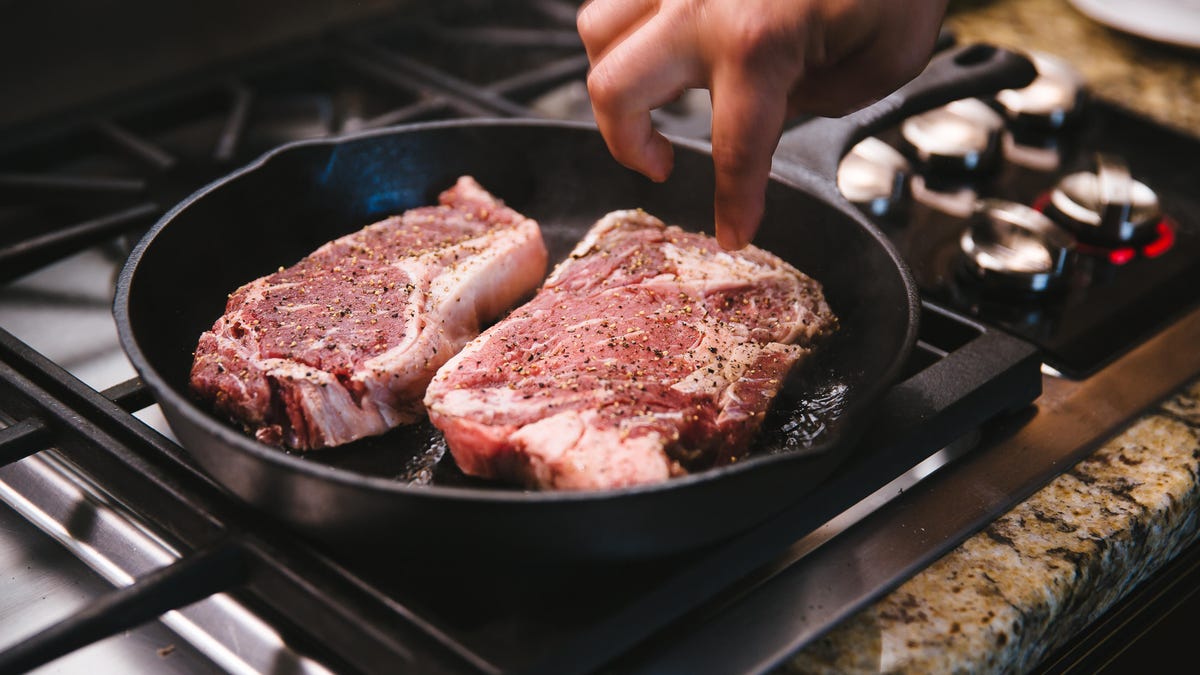
17 of 18Tyler Lizenby/CNET
Test steaks in the pan
With two steaks handy (New York strip and rib eye), I added them into the hot pan.
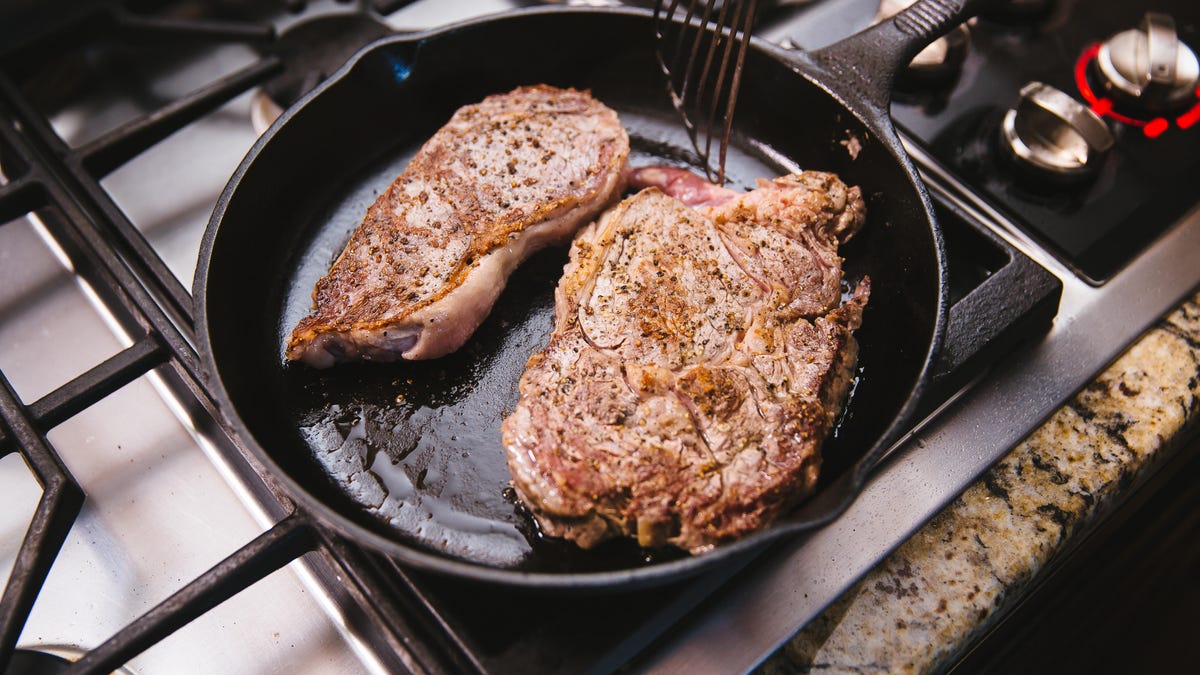
18 of 18Tyler Lizenby/CNET
Oh, that cast iron sear!
Two minutes later I flipped my steaks over. What I saw warmed my heart — nicely browned crust — the hallmark of a well-seasoned cast-iron skillet.

